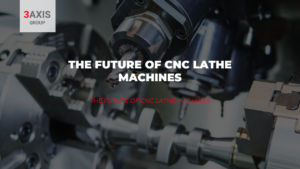Who invented the vertical milling machine? Today we will travel back in time! Specifically, to the past, several centuries ago to talk about the history of the milling machine. How were the first steps of this machine tool so essential in many workshops today.
We will make a small review of the main protagonists of the invention and development of this machine tool.
Although the first milling machine designed by Eli Witney to lighten the construction of rifles in the city of Connecticut (USA) dates back to 1818. Its existence dates to the 1700s, when watchmakers used them to trim their wheels. Also, American engineer Joseph R. Brown was a major player in the rise of milling machines. At the Paris Exhibition of 1867, he brought along his universal milling machine to showcase. It was incredibly versatile, first being made to build spiral flutes for twist drills and later gaining a formed cutter.
What is milling machine?
The milling machine has got the cutter installed up on it which helps in removing the material from the surface of the work piece. When the material gets cooled down then it is removed from the milling machine.
Some of the common operations that can be performed on the mill include:
- These operations provide a flat surface or spot on a work piece, typically with a specific orientation to other work piece features, surfaces, or another piece.
- Drilling or boring. Where specific orientations are required between work piece features, the vertical mill provides the means to accurately index and machine holes
There are two types of milling machines: the vertical milling machine and the horizontal milling machine. We will focus on the vertical option; it has a vertically arranged spindle axis and rotate by staying at the same axis. The spindle can also be extended and performing functions such as drilling and cutting.
In short, the milling machine is a widely used machine in many industries because of the high metal removal rate, good accuracy, and better surface finish. Therefore, a milling machine finds a wide application in production work.
History of milling machine
As previously mentioned, the first milling machine was built in 1818 and was designed by the American Eli Whitney to speed up the construction of rifles in the state of Connecticut. In the 1830s, the firm of Gay & Silver built a milling machine that incorporated the vertical regulating mechanism and a holder for the tool-holding spindle.
In 1848 the American engineer Frederick. W. Howe designed and manufactured for Robbins & Lawrence the first universal milling machine incorporating a profile copying device. Around the same time, the Lincoln milling machine, which incorporated a vertically adjustable cylindrical ram, became known. In the middle of the 19th century, the construction of vertical milling machines began.
The first universal milling machine equipped with a dividing plate that allowed the manufacture of spur and helical gears was manufactured by Brown & Sharpe in 1853, on the initiative and at the request of Frederick W. Howe, and was presented at the Paris Universal Exposition of 1867. In 1884, the American company Cincinnati built a universal milling machine incorporating an axially positioned cylindrical ram.
In 1874, French machine tool builder Pierre Philippe Huré designed a machine with a double spindle, vertical and horizontal, which were positioned by manual turning.
With the rise of automation from the 1940s onwards, the next step was bringing milling machines to the future. Manual usage may have given workers a chance to be more precise, but it was dangerous and known to be deadly. Preprogrammed machines were safer, if more inaccurate (at the time). Numerical control was the first attempt to bring such programming to the industry. It was mostly successful and continued to evolve as computers grew more prevalent.
Now that you know a little more about the history of this machine tool and the importance it has had over the years, you can visit our Marketplace and take a look at our CNC milling machines. If you have any questions, you can contact us, we will be happy to help you!
Discover also:




